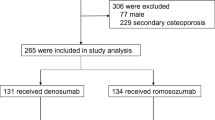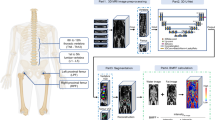Abstract
Bone mineral density (BMD), the major factor determining bone strength, is closely related to osteoporotic fracture risk and is determined largely by multiple genetic factors. Semaphorin 7a (SEMA7A), a recently described member of the semaphorin family, has been shown to play a critical role in the activation of monocyte/macrophages that share progenitors with bone-resorbing osteoclasts and thus might contribute to osteoclast development. In the present study, we directly sequenced the SEMA7A gene in 24 Korean individuals, and identified 15 sequence variants. Five polymorphisms (+15667G>A, +15775C>G, +16285C>T, +19317C>T, +22331A>G) were selected and genotyped in postmenopausal Korean women (n=560) together with measurement of the areal BMD (g/cm2) of the anterior-posterior lumbar spine and the non-dominant proximal femur using dual-energy X-ray absorptiometry. We found that polymorphisms of the SEMA7A gene were associated with the BMD of the lumbar spine and femoral neck. SEMA7A+15775C>G and SEMA7A+22331A>G were associated with low BMD of the femoral neck (P=0.02) and lumbar spine (P=0.04) in a recessive model. SEMA7A-ht4 also showed an association with risk of vertebral fracture (OR=1.87–1.93, P=0.02–0.03). Our results suggest that variations in SEMA7A may play a role in decreased BMD and risk of vertebral fracture.
Similar content being viewed by others
Log in or create a free account to read this content
Gain free access to this article, as well as selected content from this journal and more on nature.com
or
References
Arden NK, Spector TD (1997) Genetic influences on muscle strength, lean body mass, and bone mineral density: a twin study. J Bone Miner Res 12:2076–2081
Comeau MR, Johnson R, DuBose RF, Petersen M, Gearing P, VandenBos T, Park L, Farrah T, Buller RM, Cohen JI, Strockbine LD, Rauch C, Spriggs MK (1998) A poxvirus-encoded semaphorin induces cytokine production from monocytes and binds to a novel cellular semaphorin receptor, VESPR. Immunity 8:473–482
Delorme G, Saltel F, Bonnelye E, Jurdic P, Machuca-Gayet I (2005) Expression and function of semaphorin 7A in bone cells. Biol Cell 97:589–597
Eisman JA (1999) Genetics of osteoporosis. Endocr Rev 20:788–804
Hedrick P, Kumar S (2001) Mutation and linkage disequilibrium in human mtDNA. Eur J Hum Genet 9:969–972
Hedrick PW (1987) Gametic disequilibrium measures: proceed with caution. Genetics 117:331–341
Holmes S, Downs AM, Fosberry A, Hayes PD, Michalovich D, Murdoch P, Moores K, Fox J, Deen K, Pettman G, Wattam T, Lewis C (2002) Sema7A is a potent monocyte stimulator. Scand J Immunol 56:270–275
Jo JM, Kim JS, Kim GS, Kim SW, Shin JW, Moon DH, Lee HK (1999) Cross-calibration of bone mineral density between two different dual X-ray absorptiometry systems: hologic QDR 4500-A and lunar EXPERT-XL. Korean J Nucl Med 33:282–288
Kanis JA, Melton LJ III, Christiansen C, Johnston CC, Khaltaev N (1994) The diagnosis of osteoporosis. J Bone Miner Res 9:1137–1141
Kim GS, Koh JM, Chang JS, Park BL, Kim LH, Park EK, Kim SY, Shin HD (2005) Association of the OSCAR promoter polymorphism with BMD in postmenopausal women. J Bone Miner Res 20:1342–1348
Lander ES, Schork NJ (1994) Genetic dissection of complex traits. Science 265:2037–2048
Lange C, Liehr T, Goen M, Gebhart E, Fleckenstein B, Ensser A (1998) New eukaryotic semaphorins with close homology to semaphorins of DNA viruses. Genomics 51:340–350
Livak KJ (1999) Allelic discrimination using fluorogenic probes and the 5′ nuclease assay. Genet Anal 14:143–149
Nathan H (1962) Osteophytes of the vertebral column: an anatomical study of their development according to age, race, and sex with considerations as to their etiology and significance. J Bone Joint Surg Am 44A:243–268
Pasterkamp RJ, Peschon JJ, Spriggs MK, Kolodkin AL (2003) Semaphorin 7A promotes axon outgrowth through integrins and MAPKs. Nature 424:398–405
Peacock M, Turner CH, Econs MJ, Foroud T (2002) Genetics of osteoporosis. Endocr Rev 23:303–326
Slemenda CW, Christian JC, Williams CJ, Norton JA, Johnston CC Jr (1991) Genetic determinants of bone mass in adult women: a reevaluation of the twin model and the potential importance of gene interaction on heritability estimates. J Bone Miner Res 6:561–567
Stephens M, Smith NJ, Donnelly P (2001) A new statistical method for haplotype reconstruction from population data. Am J Hum Genet 68:978–989
Stewart TL, Ralston SH (2000) Role of genetic factors in the pathogenesis of osteoporosis. J Endocrinol 166:235–245
Weeks DE, Lathrop GM (1995) Polygenic disease: methods for mapping complex disease traits. Trends Genet 11:513–519
Xu X, Ng S, Wu ZL, Nguyen D, Homburger S, Seidel-Dugan C, Ebens A, Luo Y (1998) Human semaphorin K1 is glycosylphosphatidylinositol-linked and defines a new subfamily of viral-related semaphorins. J Biol Chem 273:22428–22434
Acknowledgement
This study was supported by a grant from the Korea Health 21 R&D Project, Ministry of Health & Welfare, Republic of Korea (Project No.: 01-PJ3-PG6-01GN11-0002).
Author information
Authors and Affiliations
Corresponding author
Additional information
Jung-Min Koh and Bermseok Oh contributed equally to this work
Electronic Supplementary Material
Rights and permissions
About this article
Cite this article
Koh, JM., Oh, B., Lee, J.Y. et al. Association study of semaphorin 7a (sema7a) polymorphisms with bone mineral density and fracture risk in postmenopausal Korean women. J Hum Genet 51, 112–117 (2006). https://doi.org/10.1007/s10038-005-0331-z
Received:
Accepted:
Published:
Issue date:
DOI: https://doi.org/10.1007/s10038-005-0331-z
Keywords
This article is cited by
-
Semaphorin 7a exerts pleiotropic effects to promote breast tumor progression
Oncogene (2016)
-
Bone cell communication factors and Semaphorins
BoneKEy Reports (2012)
-
Runx2 promotes both osteoblastogenesis and novel osteoclastogenic signals in ST2 mesenchymal progenitor cells
Osteoporosis International (2012)
-
Suppression of bone formation by osteoclastic expression of semaphorin 4D
Nature Medicine (2011)
-
Plexin C1, A Receptor for Semaphorin 7A, Inactivates Cofilin and Is a Potential Tumor Suppressor for Melanoma Progression
Journal of Investigative Dermatology (2009)



